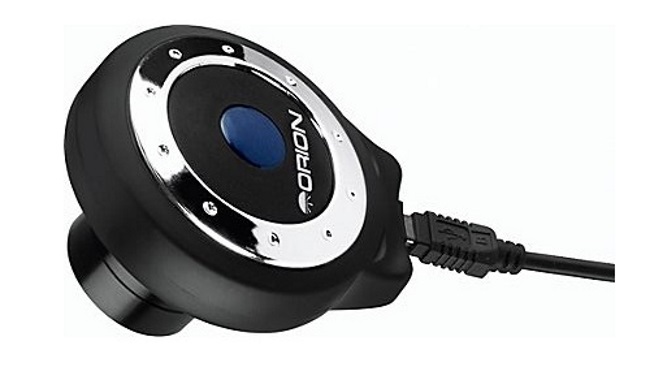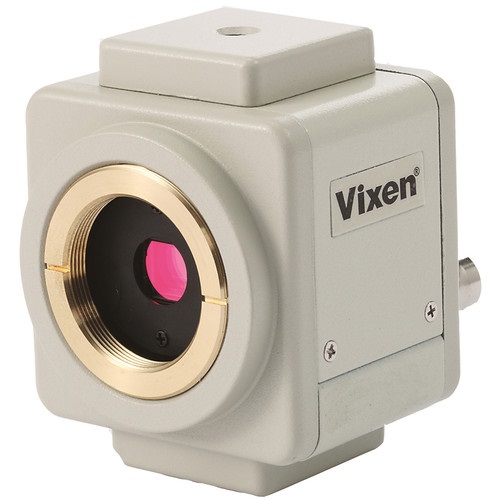If you love learning about and taking photos of planets, constellations and more, then you should have the best astrophotography camera. You just need some basic astronomy knowledge, and you can focus on the planet or moon you want to snap a picture of and be able to focus in and get the best photo.
In this review, we are going to show you the best astrophotography cameras on the market and hopefully you will find the next best camera for you.
Top Product Reviews
In the reviews below, you will see the price, features, and more about astrophotography cameras. You can also read more on the topic on OpticGearLab, where you can get the full scoop on these types of cameras.
Orion Starshoot Imaging Camera
Best used for LRGB astrophotos and tri-color technique, the Orion StarShoot Imaging Camera is great for those who are new to astrophotography and want something that is basically, hassle free. While it has a smaller field of view from DSLR to CCD, this camera is made of solid construction, comes with a decent price tag, and is low on noise.
With CCD chip sensitivity, you can expect 752 x 582 pixels on each photo you take and it will show the finer details of whatever you are shooting photos of. You can also find the best LRGB or filters for your camera that will give you amazing photos.
Costing around $350, this camera is highly affordable and even has a half inch format CCD sensor that is generally found in the more expensive cameras. Another great feature is the thermoelectric cooling that is regulated, as well as the previously mentioned noise reduction.
With this camera, you get Orion Studio Software that will help you to process, share and edit your photos. The ASCOM drivers help with auto guiding you while using it. The software is compatible with Windows XP, 7, 8 and Windows Vista.
Overall, this camera is well received because of the low cost, high sensitivity and regulated cooling. The great parts about this camera include the high performance, built in output jack, and the cooling system.

Vixen Optics CCD Video Camera
At about $400, the Vixen Optics CCD Video Camera weighs 1.43 pounds and has a 1/3 inch color imaging sensor. It also includes a BNC video out terminal and 540 TV lines resolution. This camera is best for imaging and auto guiding.
The tracking precision and image capture are second to none and it offers the option to stack and filter your photos. The calibration is simple and will mount easily as well as give you accurate tracking. To calibrate, you will simply use the Vixen’s StarBook 10 Advanced unit and it will auto calibrate.
This camera also includes a flip mirror system that will help you get even more images, by using the T-ring adaptor. It has great functioning as it has an auto tracking White Balance that makes sure the colors are evenly shown (even though it uses the factory white standard, you can make adjustments).
There is also an auto sharpness feature that keeps the images bright and allows you to flip the image. The feature also corrects the photo when you need it to. The digital zoom is a nice feature and it also includes a Black Light Compensation for image improvement and includes many accessories like an RCA cord, and AC adapter.
Celestron Skyris 236M CMOS Camera
The Celestron Skyris 236M CMOS weighs 1 pound and will cost you around $400. This is best used for planetary imaging and has a 2.8 microns sensor pixel and is light and compatible with various telescopes.
With high resolution, you can capture astronomical photos in a fraction of a second. It also uses Sony Exmor CMOS that is sensitive and helps with the imaging of astrophotography. The sensor is a monochrome Sony IMX236LQL that will send the photos right to your computer using the iCap software that is included.
The iCap software is a stacking program that lets you filter the images you like, which uses a Super Speed USB 3.0 for fast data transfer. No external power is needed and it’s even power saving.
Not only can you use the black and white image feature but you can use custom colored images as well so you can capture the rings of Saturn or the planet Mars with a high color. If you get yourself a motorized mount, you can steadily capture pictures of planets and constellations with ease.
Orion 52031 Starshoot
The Orion 22031 StarShoot is extremely light weight and will cost you about $360. It includes a 74% quantum efficiency with a built in ST4 port and has auto guiding sensitivity. This camera is best used for auto guiding, deep space objects and high-quality astrophotography.
Versatile, this camera has a monochrome device that is sensitive to give you multi-purpose images with precise auto guiding. You can use this to take pictures of many astral related items like planets, moons, rings, etc. The camera also has a 10-minute max exposure time so it can be used for deep space.
It’s slim and light so you get a nice back focus range so you can take better pictures and use image accessories such as the off axis guiders. The camera also includes a 1/3 inch CMOS sensor that will give you a 1.2 MP resolution for the perfect photo. It’s a fast frame rate camera that can take up to 200 frames in a single second, so you don’t miss one moment of the galaxy.
You also get the Orion AstroCap software that will help with focus aids, histogram, exposure and more. Included with the camera, there is a nose piece for filters, a USB cable and an auto guide cable and a case for storage. You can connect this camera to most Windows computers like XP, 7, 8, 10 and Vista.
Conclusion
Now that you have seen some of the best astrophotography cameras on the market, are you ready to go shopping for one? Now that you have seen all of the features of these cameras and what they can do, you can now go out shopping successfully for a new camera! We sure hope one of these will catch your eye!
Author Bio
Mike is a passionate hunter and his favorite grounds are Alaska and British Columbia. He’s also an expert in hunting gear and he is one of the most reliable resources when it comes to choosing the right tools for the job. He also writes for OpiticGearLab.com
